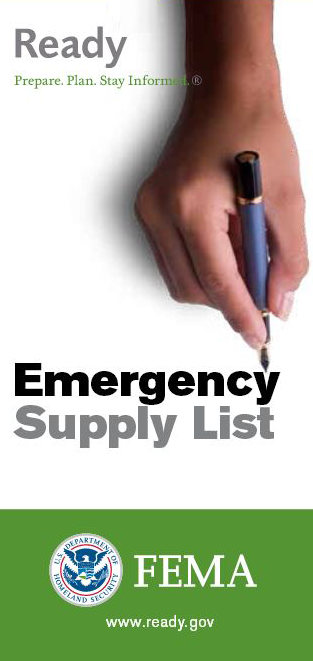Being prepared means having the right resources at your fingertips when a disaster strikes. Creating a well-stocked emergency kit is essential, not just during tornado season but throughout the year. Several reputable organizations offer comprehensive guides on what to include in your emergency kit:
Navigating Storms from Afar
Lessons in Weather Awareness and Preparedness

Springtime not only brings beautiful blooms but also the peak season for severe weather, including tornadoes. My harrowing experience with a tornado while isolated on a cruise illustrates the sudden and unpredictable nature of these storms. It also underscores the critical importance of technological advances and diligent weather preparedness in safeguarding communities.
The Day That Changed Everything:
Imagine enjoying a peaceful show on a cruise, far from everyday worries, when suddenly your phone becomes a lifeline to a disaster unfolding back home. This was my reality on the evening of December 10, 2021 when a friend’s call alerted me to a tornado hitting back home in Trumann, Arkansas. The sense of helplessness was overwhelming; I was physically there but emotionally and mentally miles away, glued to my phone for updates. The tornado directly hit Trumann Nursing Home, and I had no way to help or even get more information. The feeling of helplessness grew as messages poured in—friends and family checking in, everyone scrambling for information. Amidst this chaos, news that Checkers Pizza, FireTEXT and the Trumann Fire Department had suffered significant damage only deepened my concern.
The storm’s reach didn’t end in Trumann. As I tried to return home, the storms effects followed, delaying flights and extending a journey already fraught with anxiety and fear. Over 12 hours of waiting for a connecting flight due to weather disruptions compounded the frustration and helplessness I felt. It was a stark reminder of nature's reach and power.
Reflecting on that day and its aftermath, I recognize how critical it is to stay informed and prepared. While I was fortunate to not suffer personal loss, the emotional and psychological impact was significant. As we embrace the beauty of spring, let’s also respect its potential fury by staying weather aware and prepared. Let this story be a reminder of the power of nature and the importance of readiness.
Understanding Weather Alerts: Watch vs. Warning:
- A Watch indicates that conditions are favorable for severe weather and serves as a cue to prepare and stay alert.
- A Warning, on the other hand, means that severe weather is imminent or already occurring, and immediate action is required to stay safe.
Knowing these differences can be the difference between safety and danger.
What is a Tornado Emergency?
In 1999, a particularly destructive tornado threatened Oklahoma City. Forecasters, recognizing the severity, coined the term "Tornado Emergency" to convey an unprecedented level of threat. Today, the National Weather Service issues a Tornado Emergency under specific conditions:
- Severe threat to human life is imminent or ongoing.
- Catastrophic damage is expected or occurring.
- Confirmation of the tornado is verified by visual accounts or radar imagery, such as a debris ball signature indicating a damaging tornado.
This enhanced warning was first introduced during an event where the damage and threat to life were beyond the ordinary. Similarly, an EF4 tornado on 02/05/2008 tracked through multiple counties in Arkansas, underscoring the severe dangers these weather events can pose.
Since the devastating F5 tornado in 1929 in Arkansas, technology has revolutionized weather forecasting and alerts. Innovations in radar technology, satellite imaging, and real-time data processing have vastly improved the accuracy and timeliness of weather warnings, potentially saving countless lives. In 2010, advanced warning systems were credited with saving many lives in Arkansas during severe tornado outbreaks.
Preparation goes beyond knowing the difference between a watch and a warning. It involves having a robust emergency plan, maintaining a well-stocked emergency kit, and understanding your community’s evacuation routes and shelters. “Don’t be scared, be prepared,” is more than just a slogan; it’s a proactive approach to personal and community safety. Weather preparedness workshops, community drills, and educational programs can further enhance one’s readiness for severe weather events.
As we continue to enjoy the warmth and beauty of spring, we must also prepare for its volatility. Let’s commit to enhancing our weather awareness and readiness. Advanced warnings and a proactive approach are our best defenses against the unpredictability of severe weather. Stay informed, stay prepared, and help ensure that when storms arise, you and your loved ones remain safe.
- Basic Supplies: At a minimum, your kit should include water (one gallon per person per day for at least three days), non-perishable food (a three-day supply per person), a flashlight, a battery-powered or hand-crank radio, extra batteries, a first aid kit, a whistle to signal for help, dust masks, plastic sheeting and duct tape for sheltering in place, moist towelettes, garbage bags and plastic ties for personal sanitation, a wrench or pliers to turn off utilities, manual can opener for food, local maps, and a cell phone with chargers and a backup battery.
- Special Considerations: Consider the needs of all family members and add supplies accordingly. Include medications, prescription eyeglasses, infant formula and diapers, pet food and extra water for your pet, important family documents such as copies of insurance policies, identification, and bank account records saved electronically or in a waterproof, portable container.
- Stay Informed: Keeping informed about the latest weather updates and emergency instructions can make a critical difference in ensuring your safety. Include a NOAA Weather Radio in your kit for updates from the National Weather Service.
- Additional Resources:
- The National Weather Service offers a simple list to get you started on your emergency supply kit: NWS Mobile Supply Kit.
- For a child-friendly kit list and safety tips, check out the Young Meteorologist's Emergency Supplies Kit and Plan at NWS Owlie's Emergency Kit.
- Ready.gov provides a comprehensive guide to building an emergency kit, including maintaining your kit and storing it appropriately: Ready.gov Emergency Kit.
- The American Red Cross has specific advice for different types of disasters, ensuring you’re ready for anything that might come your way: Red Cross Thunderstorm Safety Checklist.
- Make a plan, make a kit. A kit of basic emergency supplies and a first aid kit are easy to assemble and an important way to prepare for severe weather:
Entergy
A well-prepared emergency kit can be your lifeline during a disaster. By assembling a kit in advance and maintaining it regularly, you can alleviate some of the stress and uncertainty that comes with emergency situations. Whether it's a tornado, a severe thunderstorm, or another type of natural disaster, having these essentials on hand will help you and your family stay safe.
Find more useful information on ready.gov and redcross.org.
Stay Safe,
John Cook




